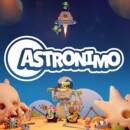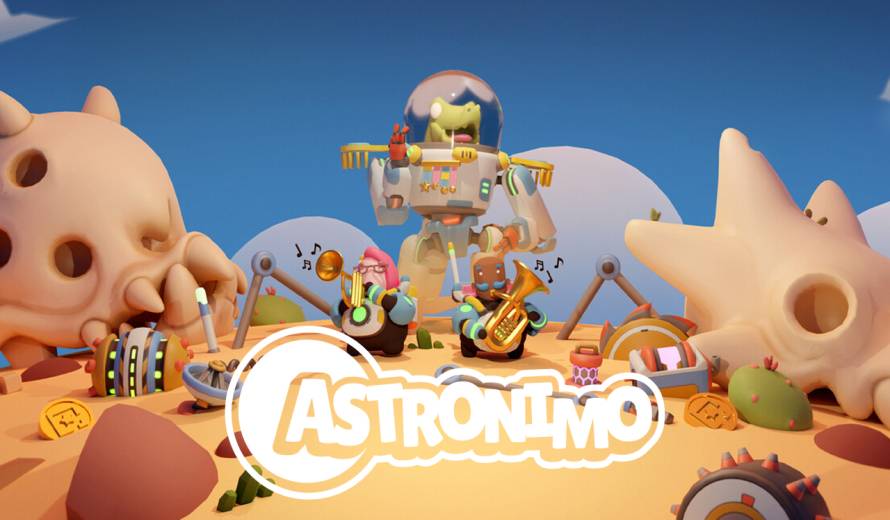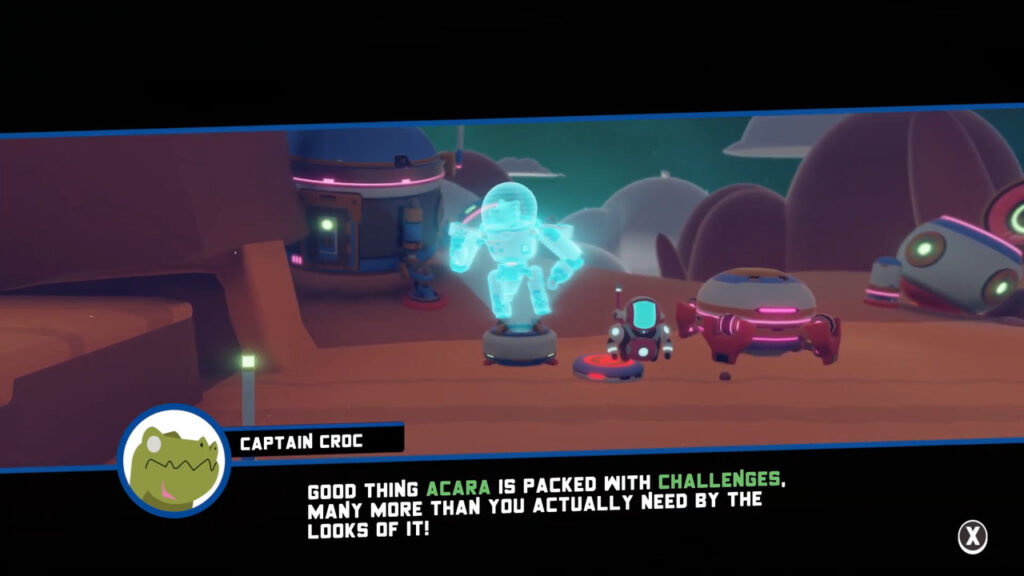
Developer: Coatsink
Publisher: Thunderful Group
Platforms: PC
Tested on: PC
Astronimo – Review
For how big of an entertainment industry gaming is, there aren’t a whole lot of indie games aimed at the younger crowds. Sure, you have your Marios and your Pokémon, but apart from Nintendo’s own offerings, it’s as if young kids are stuck with shoddy licensed titles or educational games. As such, we were happy to discover that Astronimo aims to cater to the generation that is only taking their first steps into the gaming world, without having to compromise on quality. It’s not just 6 to 9-year-old kids that will find something to love here either. Join us as we take a look at Astronimo, and find out why this family-friendly title might just be the ticket for your next parent-child game night.
Story
There isn’t a whole lot of depth to Astronimo’s story. Players take on the role of tiny astronauts, who are members of the crew of Captain Croc’s spaceship. For some unclear reason, our little astronaut -or astronauts if you are playing in co-op- has become separated from the captain. Upon re-establishing communication, the captain expresses joy that you’re still alive, which indicates that prior events were dangerous enough to presume that you’d be dead. You’re not out of any rough waters yet, since you’re now stranded on a foreign and presumably hostile planet. The captain is on a nearby moon, so you’ll need to find a way off the planet and return to him. You’ll end up across various planets, however, on your journey to reunite with Captain Croc, each filled with secrets to discover, puzzles to solve, and dangers to overcome.
Graphics
With simple, colorful character designs, and a surprising amount of customizability, Astronimo is definitely easy on the eyes. The game features a storybook aesthetic that the target audience will definitely enjoy, and thanks to the huge amount of collectible cosmetics and the ability to swap the colors of your astronaut’s spacesuit, you can really personalize the game to your liking. Astronimo’s visuals aren’t perfect, however, due to the physics-based nature of the game. Self-built contraptions often clip into the environment, ruining the immersion somewhat. Performance-wise, the simple graphics aren’t too taxing, and we didn’t run into any performance issues during our time with the game.
Sound
Accompanying the soft, cutesy visuals are cheerful tunes that fit the game’s overall family-friendly atmosphere. Voice acting is absent, which is a bit disappointing, especially since the target audience for the game might not be necessarily fluent in reading English. Being a physics-based game, it’s of course important that the sound effects have some heft to them, and fortunately, this is definitely the case here. Whenever you bump or crash your contraptions into the environment, there is an audible oomph to the collision, for example.
Gameplay
Remember LittleBigPlanet? We assume developer Coatsink does, because Astronimo’s gameplay shares several similarities with Sackboy’s adventures. What you’re getting here is a puzzle platformer where players are able to construct various contraptions and vehicles to help them traverse the levels. While this is technically a 2.5D platformer, there are various lanes that player characters can jump between, just like in the aforementioned LittleBigPlanet games. Not only does this add literal depth to the gameplay, but certain environmental puzzles are built around lane-switching. The big draw, however, is the construction aspect. As you progress through the game, you’ll gather materials in a variety of ways, which can be used to create all sorts of contraptions that allow you to overcome the many obstacles that stand between you and the end of each level. Need more height? How about a bridge to cross lava? As long as you have the right materials, your only limitation is your imagination. Of note is that there are certain early-game areas you probably wouldn’t be able to reach with the materials at hand when you first visit those points in the game. Fortunately, Astronimo also has a portal-based fast travel system, allowing you to revisit areas of interest when you have the tools to get to those out-of-reach areas.
While Astronimo can be played with a mouse and keyboard, it is recommended to play with a controller. In fact, the game prompts you to do so when you boot it up the first time. We should note that certain aspects could have been streamlined a bit more, especially when it comes to the somewhat clunky control scheme. It took some getting used to controlling each of your astronaut’s arms separately, and some of the environmental puzzles are actually built around this. This results in the occasional physics hiccup, especially when self-built contraptions become part of the equation. Speaking of building contraptions, while controlling your astronaut is indeed more enjoyable with a controller, the grid-based building mechanics feel more natural with a mouse.
It would be easy to simply label Astronimo a children’s game and call it a day, but that would be selling the game short. The game was clearly designed with a younger audience in mind, but we’d actually call this one a family game. Up to four players can team up for this adorable space adventure, and because of how accessible the game is, even less tech-savvy parents can easily team up with their offspring. The game becomes exponentially more fun when teamwork becomes part of the equation, especially when you’re creating contraptions together. Astronimo isn’t a particularly difficult game, because of the audience that it is targeted at. As a result, the tutorial feels very long-winded, especially if you’re a more experienced gamer. Should you want a more challenging Astronimo experience, rest assured, however, as the game comes packed with a World Editor. With the World Editor, you can create your own levels and share them with the community. This bodes well for the game’s longevity of course, and we can see the game truly shining through this feature, even if the main campaign isn’t particularly special.
Conclusion
Although Astronimo seems to be geared mostly towards a younger audience at first glance, there is plenty here for older players to enjoy as well. The accessible physics-based puzzle platforming gameplay is easy to understand, and although the main campaign isn’t challenging by any seasoned gamer’s standards, the World Editor makes up for this. The controls do feel a bit clunky at first, but the game eases you into its finer mechanics, making for a title that the whole family can enjoy.









No Comments